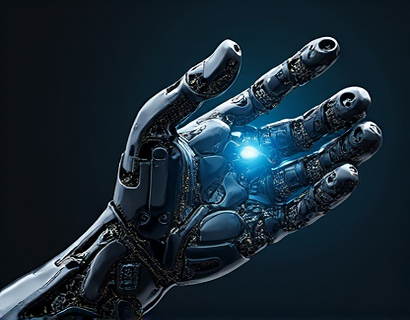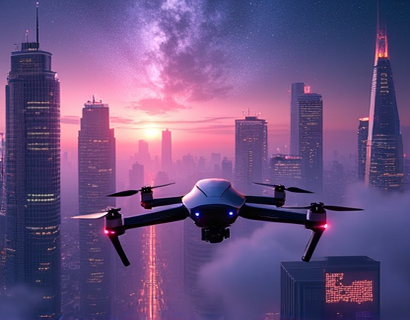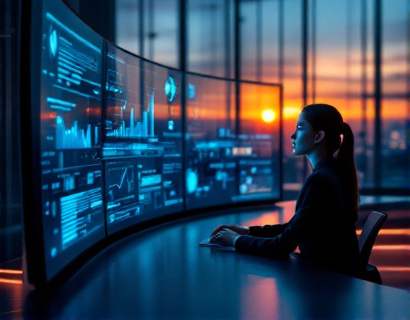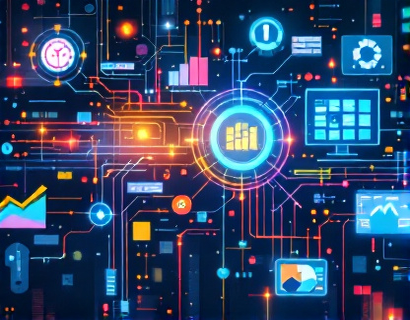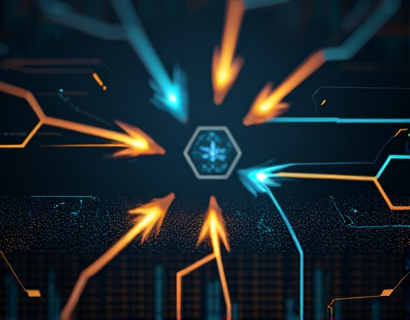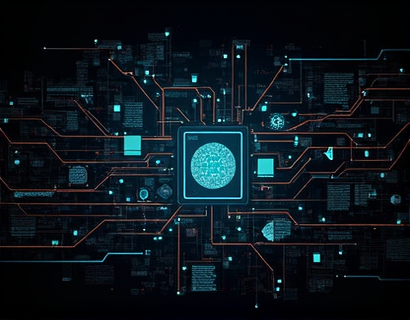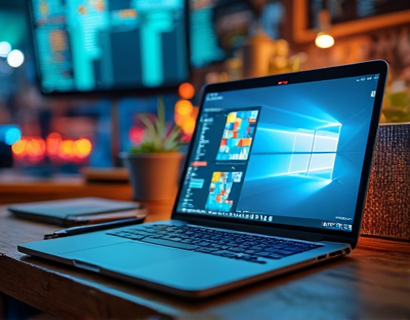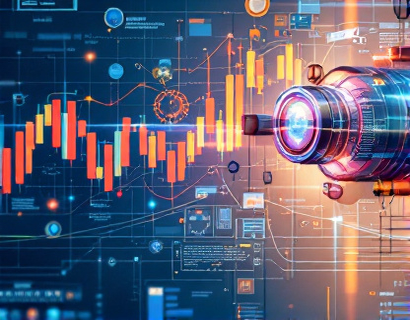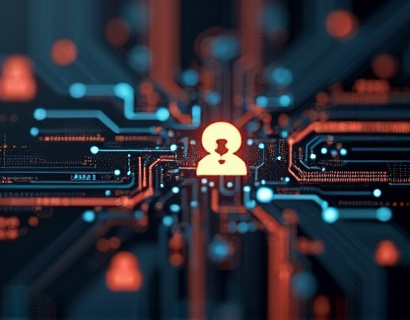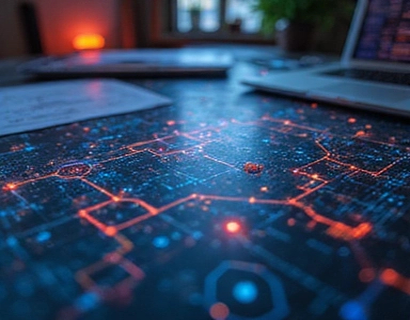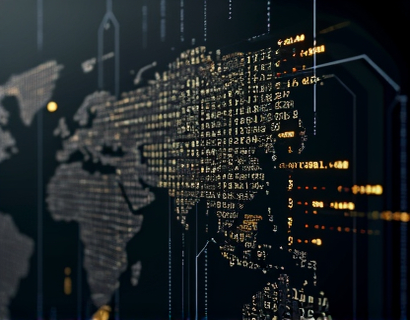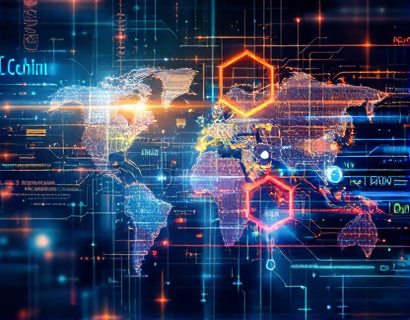Unleashing Next-Gen Digital Transformation: AI and Crypto Synergy for Enhanced User Experiences
The intersection of artificial intelligence and cryptocurrency is giving birth to a new era of digital transformation, one that promises to redefine user experiences across various sectors. This synergy is not just about combining two advanced technologies but about creating a seamless, interactive, and highly personalized digital environment. As we delve into this topic, we will explore how AI and crypto are merging to enhance user engagement, streamline processes, and unlock unprecedented opportunities in the digital landscape.
The Emergence of AI in Crypto
Artificial intelligence has been a game-changer in numerous industries, and cryptocurrency is no exception. The integration of AI into crypto technologies has led to the development of smarter, more efficient, and secure systems. One of the primary areas where AI has made a significant impact is in blockchain analytics. Traditional blockchain networks operate on a transparent and immutable ledger, which, while ensuring security and transparency, also poses challenges in terms of privacy and compliance. AI algorithms can analyze vast amounts of blockchain data to identify patterns, detect anomalies, and provide insights that help in regulatory compliance and fraud detection.
Another critical area is in the realm of trading and investment. AI-driven trading bots and algorithms can process and analyze market data in real-time, making informed decisions faster than human traders. These AI systems can adapt to changing market conditions, identify trends, and execute trades with precision, thereby enhancing the efficiency and profitability of crypto investments. Moreover, AI-powered chatbots and virtual assistants are revolutionizing customer support in the crypto space, providing 24/7 assistance and personalized advice to users.
Enhancing Security with AI
Security is a paramount concern in the crypto world, and AI is playing a crucial role in fortifying defenses against cyber threats. Machine learning models can predict and prevent potential security breaches by analyzing historical data and identifying patterns that indicate malicious activities. For instance, AI can monitor transaction patterns and detect unusual activities that may signal a hacking attempt or a fraudulent transaction. This proactive approach to security not only protects user assets but also builds trust in crypto platforms.
Furthermore, AI-driven identity verification systems are enhancing the security of crypto transactions. By using biometric data and behavioral analytics, these systems can authenticate users with high accuracy, reducing the risk of unauthorized access. This is particularly important as the crypto market continues to grow, attracting a diverse range of users, some of whom may be more susceptible to security risks.
Personalization and User Experience
The true power of AI in the crypto space lies in its ability to personalize user experiences. AI algorithms can analyze user behavior, preferences, and historical data to provide tailored recommendations and services. For example, a crypto exchange can use AI to suggest optimal trading strategies based on a user's past trades and market conditions. This level of personalization not only enhances user satisfaction but also increases the likelihood of user retention and engagement.
Moreover, AI-powered interfaces can adapt to individual user preferences, making the crypto experience more intuitive and user-friendly. Voice-activated assistants and natural language processing (NLP) technologies enable users to interact with crypto platforms using natural language, reducing the learning curve and making the technology more accessible to a broader audience.
Decentralized Applications and AI
Decentralized applications (dApps) are at the forefront of the crypto revolution, offering decentralized alternatives to traditional centralized services. AI is enhancing the functionality and user experience of dApps in several ways. For instance, AI can optimize the performance of dApps by dynamically adjusting resources based on user demand, ensuring smooth and fast operations even during peak times. This is particularly important for dApps that handle high volumes of transactions, such as decentralized finance (DeFi) platforms.
AI also plays a crucial role in the development of smart contracts. By incorporating AI into smart contracts, developers can create more sophisticated and adaptive contracts that can respond to changing conditions and execute complex logic. This not only increases the reliability of smart contracts but also opens up new possibilities for automated and trustless transactions in various domains, from supply chain management to real estate.
Data Analytics and Insights
The combination of AI and crypto is revolutionizing data analytics in the digital space. The vast amount of data generated by crypto transactions and blockchain activities can be overwhelming to analyze manually. AI algorithms can process and interpret this data at scale, providing valuable insights into market trends, user behavior, and system performance. These insights can be used to inform strategic decisions, optimize operations, and identify new business opportunities.
For instance, AI-driven analytics can help crypto projects understand the effectiveness of their marketing campaigns by analyzing user engagement and conversion rates. This data-driven approach ensures that resources are allocated efficiently, maximizing the impact of marketing efforts. Additionally, AI can predict future market trends by analyzing historical data and current market conditions, enabling stakeholders to make informed decisions.
Challenges and Considerations
While the integration of AI and crypto offers numerous benefits, it also comes with its own set of challenges. One of the primary concerns is the regulatory landscape. As AI and crypto continue to evolve, regulators are grappling with how to address the unique challenges posed by these technologies. Ensuring compliance with existing regulations while fostering innovation is a delicate balance that requires careful consideration and collaboration between stakeholders.
Another challenge is the technical complexity involved in integrating AI with crypto systems. Developing robust and secure AI models that can operate in the decentralized and dynamic environment of blockchain requires expertise in both AI and blockchain technologies. This necessitates a multidisciplinary approach, bringing together experts from various fields to create integrated solutions that are both effective and scalable.
Future Prospects
The future of AI and crypto is bright, with numerous opportunities for further innovation and growth. As AI technologies continue to advance, we can expect even more sophisticated applications in the crypto space. For example, the integration of AI with quantum computing could lead to breakthroughs in cryptography, enhancing the security and efficiency of blockchain networks. Additionally, the development of AI-driven decentralized autonomous organizations (DAOs) could redefine governance and decision-making processes in the crypto ecosystem.
Moreover, the increasing adoption of AI in crypto is likely to drive the development of new financial instruments and services. AI-powered predictive analytics can give rise to novel trading strategies and risk management tools, further enriching the crypto investment landscape. The potential for AI to create more inclusive and accessible crypto solutions is also significant, as personalized and user-friendly interfaces can lower the barriers to entry for new users.
In conclusion, the synergy between AI and crypto is unlocking a new era of digital transformation, offering enhanced user experiences and unprecedented opportunities. As these technologies continue to evolve and integrate, the possibilities for innovation and growth in the digital landscape are vast. Whether you are a tech enthusiast, a digital innovator, or an early adopter, the intersection of AI and crypto is a space worth exploring and investing in.





